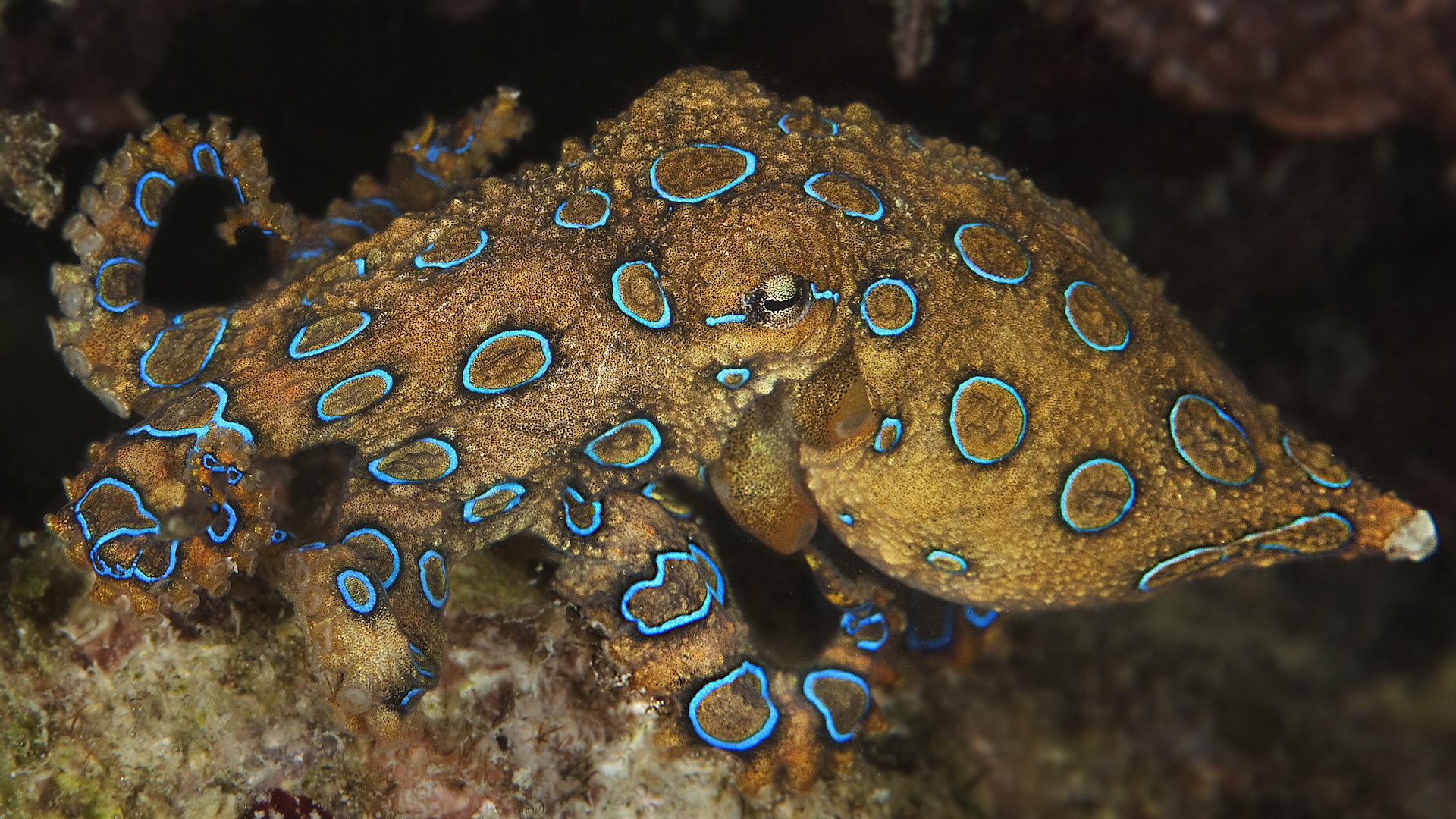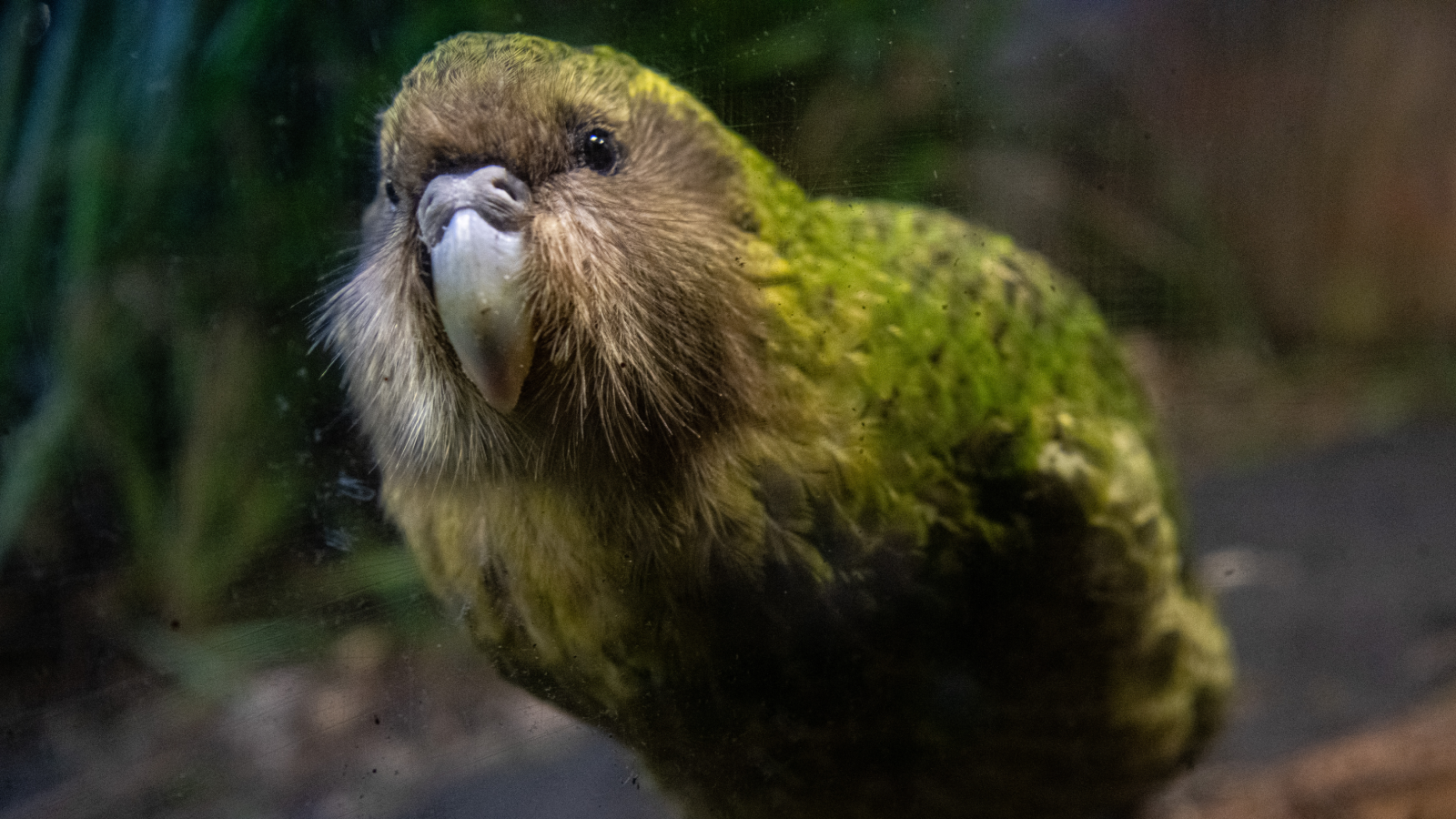Octopuses have gotten a reputation for being cunning camouflagers and intelligent creatures. But some are known for a more ominous reason: They’re deadly.
One group — the blue-ringed octopus (genus Hapalochlaena) — is especially dangerous. But what makes this creature so lethal?
Blue-ringed octopuses carry a killer concoction called tetrodotoxin (TTX), a potent neurotoxin that can paralyze living things, including humans. Tetrodotoxin is most famously known from pufferfish — improperly prepared “fugu” can kill those who eat it. Tetrodotoxin is 1,200 times more toxic to humans than cyanide and it has no known antidote.
All four of the octopus species in the genus Hapalochlaena have tetrodotoxin, making them the four most venomous species of octopus: the greater blue-ringed octopus (H. lunulata), the southern or lesser blue-ringed octopus (H. maculosa), the blue-lined octopus (H. fasciata) and the common blue-ringed octopus (H. nierstraszi). These cephalopods, with their iridescent blue circles, are indeed beautiful, but also dangerous.
All octopods — a group of marine animals that includes octopuses — have venom, but some of these animals’ venom is more potent than others’, said Michael Vecchione, an adjunct zoologist at the Smithsonian Museum of Natural History. “The blue-ringed is perhaps the most venomous,” he told Live Science in an email, in part because it lives in shallow water teeming with predators that may hope to feast on this octopus. Its venom is a natural defense.
“The venomous secretions are among a broad spectrum of naturally occurring toxins produced by octopods,” Vecchione added. However, blue-ringed octopuses don’t actually make tetrodotoxin on their own. Rather, symbiotic bacteria in their salivary glands produce it, the Australian Institute of Marine Science reports.
Related: How many hearts does an octopus have?
These octopuses reside in coral reefs and on rocky seafloors in the Pacific and Indian oceans. They hang out at depths of around 66 to 164 feet (20 to 50 meters) deep, depending on the species. They’re also tiny, measuring between 5 and 9 inches (12 to 22 centimeters) long, including their arms.
“It does make sense that such a small octopus would have to have such impressive abilities to defend itself,” Bret Grasse, manager of cephalopod operations at the University of Chicago Marine Biological Laboratory, told Live Science.
This potent venom comprises a number of compounds — like histamine, acetylcholine and dopamine — but its primary component is tetrodotoxin. It acts on nerve tissue as a neural inhibitor by blocking sodium channels — proteins in nerve cells that are essential to communication between these cells and muscles. When tetrodotoxin acts on these channels, it can stop a creature’s lung muscles from breathing and even their heart from beating.
This venom comes in handy for fighting predators and capturing prey. Blue-ringed octopuses commonly deploy their venom through direct bites. Although researchers have found a blue-ringed octopus’s venom throughout its body, like in its gills and the sac that contains its internal organs, it’s most concentrated in the posterior salivary gland, Grasse said.
They can also disperse the venom into the surrounding water. When nearby creatures — predators or prey — breathe, they take in the toxic water, which “can start to slow their motor activity and paralyze them,” Grasse said.
But the venom isn’t just weaponry; blue-ringed octopuses also employ it in mating, Grasse said. As with other animals, the female blue-ringed octopus is “substantially” larger than the male — sometimes even three to five times larger — so the male faces risks when mating, including the danger of being cannibalized.
Although the blue-ringed octopus has some resistance to its own toxins, it’s not completely immune. So the male can temporarily paralyze larger females with venom long enough to transfer a sperm packet.
The females also incorporate venom into their egg laying, Grasse said. They layer their eggs with the toxin to deter predators.
It’s uncommon for a human to get bitten by a blue-ringed octopus, Grasse said. There are at least three reported deaths caused by the blue-ringed octopus — two in Australia and one in Singapore, according to the Australian Institute of Marine Science.
While this potent toxin may lead to an agonizing death in as little as 20 minutes or as long as 24 hours, some people have lived to tell the tale. The outcomes are “actually wildly variable,” Grasse said. “Some instances where humans have had confirmed bites from blue ring octopuses result in absolutely nothing.”
In one case from 2006, a 4-year-old boy was bitten by a blue-ringed octopus in Australia. Within 10 minutes of exposure, the boy had vomited three times, reported having blurry vision and couldn’t stand on his own. An ambulance rushed him to the emergency department, where he was put on a ventilator to help him breathe for a total of 17 hours. But 28 hours after the initial bite, he was discharged with no long-term complications. Grasse confirmed that seeking medical help and use of a ventilator is the best route to go in this case.
This small but mighty creature can certainly take care of itself. “It’s a widely utilized advantage that they have, and they deploy in various ways,” Grasse said.













